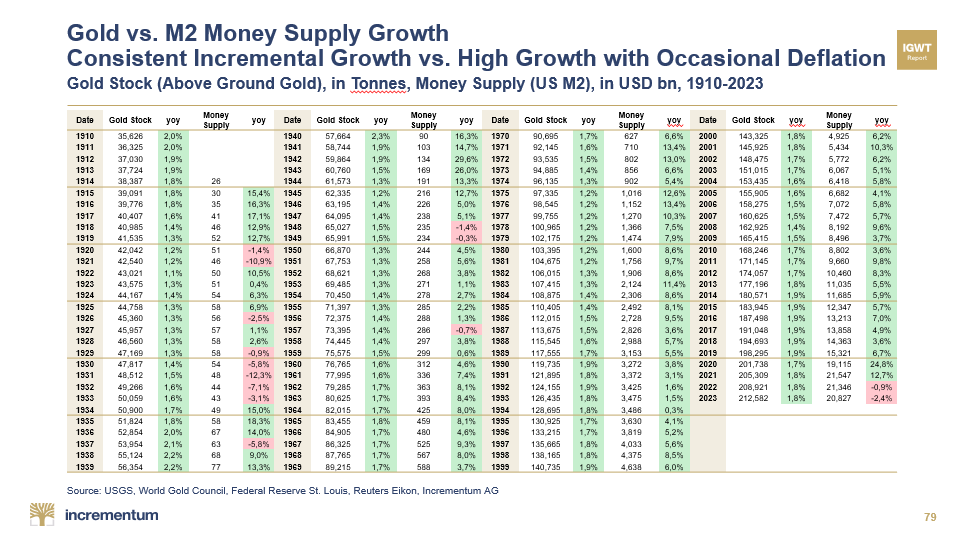Gold and Money Supply: A Century of Insights
Understanding the relationship between gold and money supply is essential when studying the global financial system. Over the past century, gold has shown a consistent growth pattern, while money supply has fluctuated dramatically. This comparison highlights why gold has played a stable role in monetary systems for thousands of years.

The Steady Growth of Gold
Gold production has been remarkably stable over the past 100 years. Each year, the global gold stock increases by only 1.5% to 2%. This consistent growth rate means that the amount of gold available today is only slightly more than what it was a year ago. This steady increase is what makes gold unique compared to other assets or commodities, which can experience much more volatility in supply.
Fluctuating Money Supply
In contrast, the money supply tends to vary widely. Over the years, we have seen the money supply grow by as much as 15% or 30% in some periods, especially during times of crisis like the Covid-19 pandemic. In such situations, central banks print more money to support economies, leading to rapid growth in the money supply. However, this rapid expansion can also lead to instability, causing economic slowdowns or even recessions when the money supply tightens again.
Stock to Flow: Comparing Gold and Money Supply
The concept of “stock to flow” is an important way to understand how much new gold is being added compared to how much already exists. Gold’s stock-to-flow ratio has remained stable, with only a small percentage of new gold being mined each year. Meanwhile, the money supply fluctuates significantly, which can affect the value of assets like real estate and equities. This contrast shows why gold remains a stable asset during times of financial uncertainty.
Gold as a Stable Base
Because of its stability, gold has often been used as a base for monetary systems throughout history. Whenever the world faces financial instability, there is a tendency to return to gold as a reliable store of value. Unlike money, which can be printed in large amounts, gold’s supply grows slowly and predictably. This has led many central banks to accumulate gold, reinforcing its role as a constant in the global financial system.
The Role of Gold in Today’s Economy
In recent years, central banks around the world have been increasing their gold reserves, signaling a return to gold’s importance in the global economy. While we may not return to a full gold standard, there could be some form of system that incorporates gold more prominently. Gold’s steady growth and limited supply make it a reliable asset, and it is likely to play a larger role in portfolios and the monetary system in the coming years.
Gold’s Future in Portfolios
As the world faces economic uncertainties, gold’s stable growth offers a sense of security. It may not be the main focus in every financial portfolio today, but its role is becoming increasingly significant. Whether through central bank reserves or individual investments, gold’s importance in the financial system is expected to grow, making it a key asset in the future.
Disclaimers and disclosures : https://tinyurl.com/2763eyaz
If you have any questions, please write to support@weekendinvesting.com













